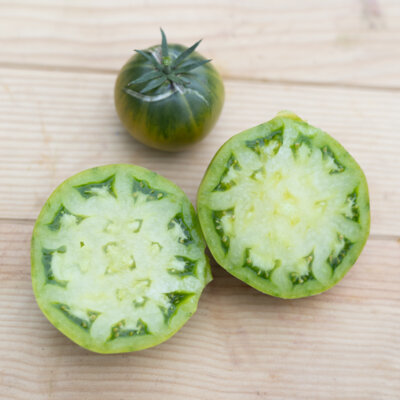
Chinese Chives - Welsh onion
Chinese chives are hardy perennials with tufts of flat, full green leaves and beautiful star-shaped white flowers. Slightly milder than garlic, it is a staple of traditional Chinese cuisine.
What are the characteristics of Chinese spring onions?
Chinese chives, Allium tuberosum, are an aromatic perennial plant native to China. This mid-season variety has flat green leaves, 30 to 40 cm high, with a flavor and fragrance reminiscent of garlic. Its white star-shaped flowers can also be enjoyed in cooking, on omelettes or in salads.
How to plant Chinese spring onions
Chinese chives can be sown in autumn or spring, either from March to May or from September to November, in a nursery or directly in the field. Choose light, well-drained soil. In southern climates, a slightly shaded area is ideal. Germination generally takes place after 14 days, at an ideal temperature of 21°C. This aromatic plant can also be grown in pots.
- Plants can be propagated by dividing clumps in autumn.
- In a bucket or honeycomb tray: sow the seeds in sowing compost, then prick out the plants with the clod of soil in the vegetable garden, 25 cm apart in all directions;
- Directly in the ground: sow lightly, in rows 25 cm apart. Thin out every 25 cm along the row. Keep the soil cool.
What companion plants should I grow with chives?
Chives and spring onions make excellent companion plants: they keep moles and certain insects away. Combine with rose , beet, carrot and chamomile. The Allium genus also reduces fusarium wilt in tomatoes. On the other hand, Alliaceae don't do well with the Fabaceae family (beans, peas, broad beans, alfalfa, lentils, etc.).
How to harvest Chinese chives
This plant is harvested from April to October. It is best eaten fresh. Cut the leaves as required. Be careful not to tear off the bulbs.
How to use Chinese spring onions
Finely chopped, this variety adds a light, garlicky flavor to salads, raw vegetables and omelettes. We recommend eating it raw, as cooking alters its flavor, and using the edible flowers to decorate dishes.
This plant is soothing, antiscorbutic, antiseptic, antitussive, cardiotonic, healing, diuretic, expectorant, hypoglycemic, laxative and stimulant. Very rich in vitamin C.
These products may also be of interest to you
in the ground
Sow in cups or honeycombed trays, then transplant with the root ball, 25 cm apart in all directions. For direct sowing, sow lightly, in rows 25 cm apart. Thin out every 25 cm along the row.
Chinese chives like light, well-drained soil. In southern areas, a slightly shady spot is ideal. Chinese chives can be propagated by dividing clumps in autumn.
March, April, May, September, October, November
April, May, June, July, August, September, October
in the ground, in pot
semi-shade, sunny
medium
all floor types
fees, furniture
Allium tuberosum
mid-season
1 gram
elongated
tender
Light green
From 30 to 40 cm
From 30 to 40 cm
China
Chinese chives are softening, antiscorbutic, antiseptic, antitussive, cardiotonic, healing, diuretic, expectorant, hypoglycemic, laxative and stimulant. Very rich in vitamin C.











